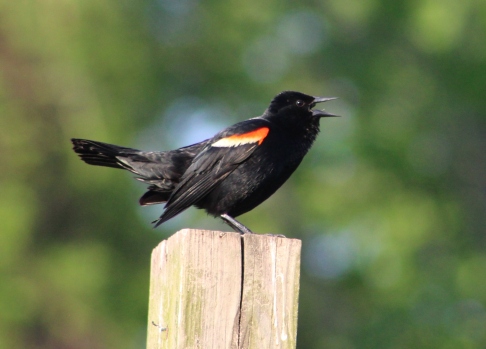Today, August 21, 2017, was a big astronomical event: the first total solar eclipse seen over the United States since 1918. The path of totality went through 14 states from the Pacific to Atlantic Coast, while the rest of the states could view a partial eclipse. Here in New Jersey, we could only see a partial eclipse. I didn’t buy special eclipse glasses so I couldn’t watch it directly. I did however, watch a live stream of the eclipse from South Carolina State Museum, which happened to be in the totality path. It was extremely cool to watch.
Although the eclipse happened at a specific time today, many people don’t realize that an “eclipse” of sorts has been occurring the last few weeks. Have you gone to your local lake or pond and notice that it seems like the male Mallards are “missing”? Many ducks molt their feathers twice a year, one of these times being mid/late-summer. At this time they go into dull-colored basic plumage, or what is referred to as eclipse plumage. For reference, a male duck is called a drake and a female duck is called a hen. In eclipse plumage, drakes take on a hen-like appearance.

All birds molt their feathers at some point during the year. For many birds, this takes place after breeding season and before migration. Molting is when old worn out feathers are replaced by new feathers. Many species undergo was is called a sequential molt. During a sequential molt, birds lose one flight feather at a time from the innermost primary feather to the wing tip. This allows the bird the ability to still be able to fly. Waterfowl, however, undergo what is referred to as simultaneous wing molt. As a result, waterfowl loses all their flight feathers at the same time and therefore lose their flying ability. This period of being flightless can last between 20 and 40 days depending on duck species.

Eclipse plumage acts as a camouflage for these flightless drakes. The drakes molt their bright colored plumage first, which is replaced by dull brown feathers. This gives them the hen-like appearance. When it comes to Mallards, it could be hard to tell whether you are seeing a hen or drake in eclipse plumage. The trick is to look at the bill. Drakes have yellow bills while hens have orange bills with black markings. Eclipse plumage only happens for a few weeks. After eclipse plumage Mallards will go into “alternate” plumage for the fall/winter.
So even though the total solar eclipse is over, you can still see some eclipse plumage with the ducks at your local pond.
Have you been seeing any eclipse plumage drakes lately? And did you watch the solar eclipse? Tell me about these things in the comments!


I’ve just started reading your blog and am really enjoying it!
LikeLike
Thank you!
LikeLike
I just learned about Eclipse plumage. This was the first time I’d read about the difference between the eclipse mallard and the hen (the bill color). Thanks!
LikeLike
You’re welcome! Glad you learned something new 🙂
LikeLiked by 1 person